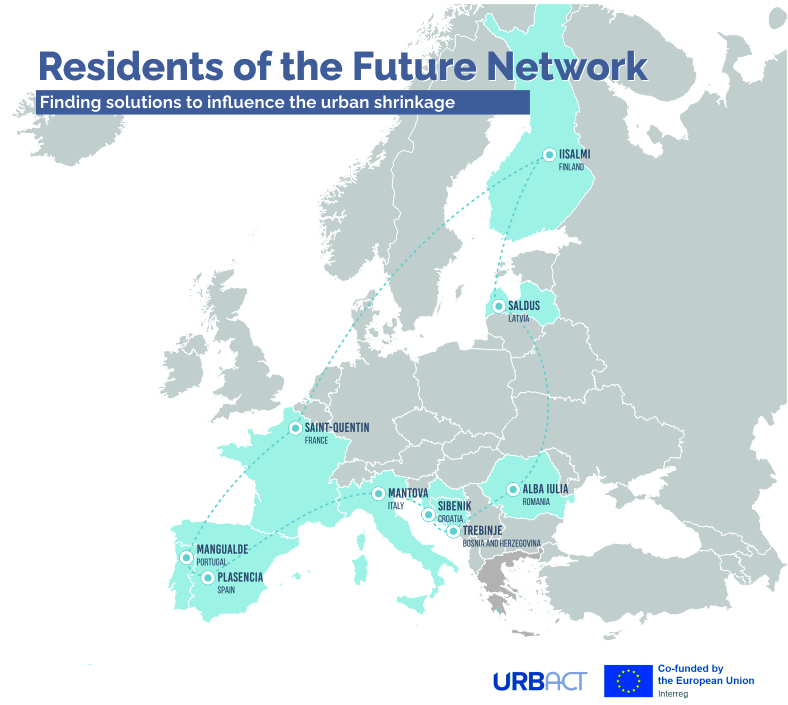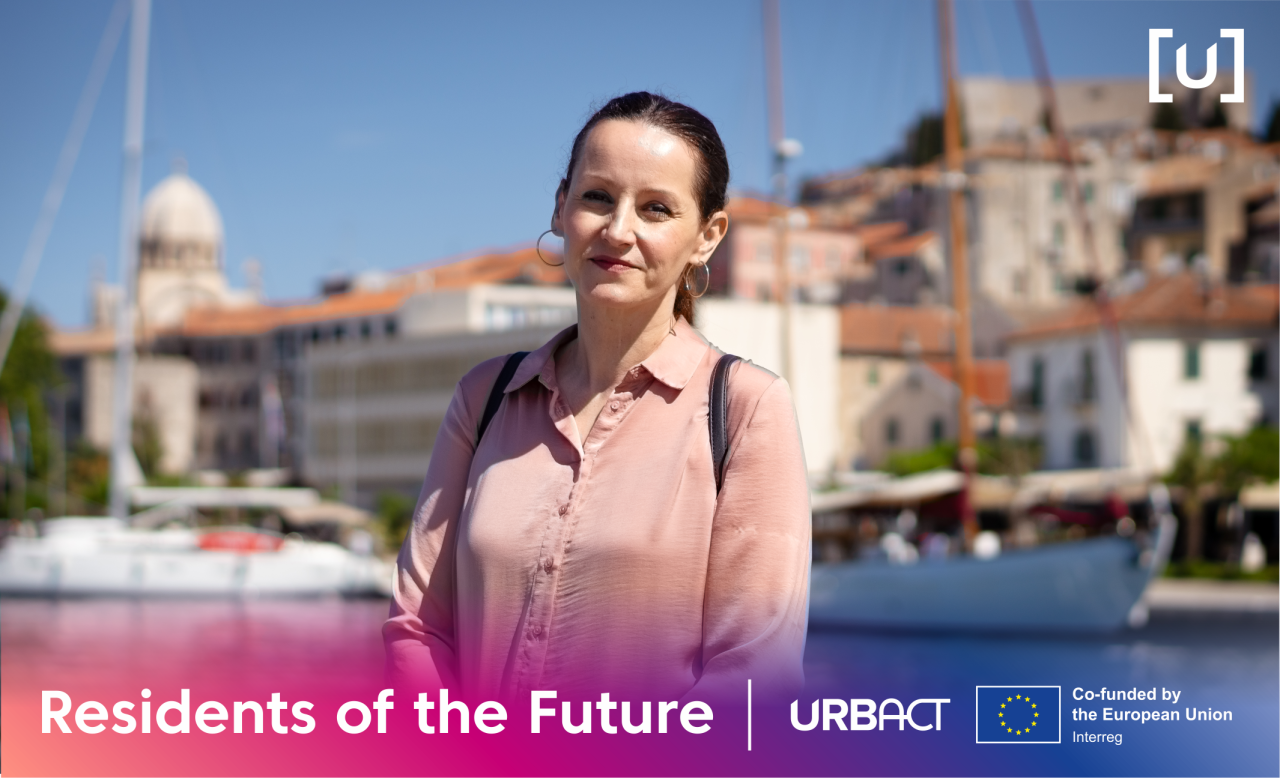What is the theme of Your network?
Over the past decade, Europe has faced unfavorable demographic trends, with more than 40% of European territory losing population. The cities that are partners in the network are small and medium-sized European cities facing the problem of depopulation. Our goal is to explore ways to increase the city's attractiveness for retaining existing residents and attracting new investments and residents. With the introduction of the digital era after COVID, new ways of working, living, and communicating, cities should redefine their advantages compared to large urban centres and develop plans with holistic solutions aimed at citizens that attract new and/or returning talents.

What are the main differences for you compared to the previous URBACT experience of being just a 'regular' partner? Would you recommend to other cities who participated in URBACT to try being a lead partner?
The decision to prepare the project from the position of the lead partner was made as a result of our long-standing experience with URBACT and other projects. I believe that the main difference lays in the fact that lead partner feels responsible for the implementation of the project in their own cities as well as the cities of project partners. Partner project teams have trust in the lead partner and rely heavily on them for program knowledge, activity planning advice, reporting processes, etc. However, lead partners have the support of the URBACT program Secretariat, the relevant ministry, and national contact points, which greatly facilitates project management. After participating in three action networks (Vital Cities, RetaiLink, Kairos) and one good practice transfer network (C-Change), the role of lead partner was a logical step, and I recommend the same to other Croatian partners. We still have yet to try out the innovation transfer networks.
As a lead partner, you have a Lead Expert who assists in the elaboration and implementation of network activities and the definition of the theme you are addressing. How was the Lead Expert selected, and for which activities will you use their help?
The network's Lead Expert is mr. Tiago Ferreira, a person with experience in entrepreneurship, tourism management, and development. Before starting his own company, he worked at a local development agency in a small Portuguese town and participated in four URBACT networks, coordinating one of them, so he understands the topic and all other aspects of such projects. Given the specific theme of our network, it was not easy to find specialized knowledge, so we based our selection on the three main elements of the project: digital transformation, economic diversification, and city branding. We are confident in our choice. After analyzing the situation in all cities and creating the network plan for the next two years, Mr. Ferreira will participate in planning and organizing international project meetings and co-producing action plans, which is the main product of the project.
Testing Actions (formerly small-scale actions, in the previous iteration of the program) are an important element of URBACT activities – they allow piloting and testing possible solutions before including them in integrated action plans. Do you already have ideas about what you would like to test within your project?
We tested small-scale actions through earlier projects. They innovatively allow cities to test potential ideas/solutions and measure results. However, until the first joint workshop with partners in Malmö, I could not imagine what these actions might be, clearly linked to our theme and future action plans. During just one network@work workshop, about twenty examples were concretized, such as mentorship programs, connecting youth with employers, examining the gap between jobs and skills, presentation skills training, subsidies for young families, etc. I am excited to see which other visions will be realized over the two-year journey of the network.
Speaking of the network theme – what goals have you set for creating the IAP? What does the city want to achieve, and how do you see the inclusion of the results of this project in future policy activities (measures, programs, and policies) of the city?
Although the city has exceptionally preserved natural and cultural heritage, rich history, and significant potential, according to the latest census, Šibenik has seen an 8% population decline. Local authorities generally have standard measures in their plans and budgets to address this problem, but we asked ourselves what more can be done, how to react? The ability of local government to retain and attract residents depends on the quality of life in the city, which depends on economic, social, cultural, geographical, and ecological factors. Mitigating negative demographic trends and creating a stimulating environment for young people and families are the foundations of overall development, and implementing consistent stimulating policies, developing public functions and services, and adequately developing the market offers an opportunity to improve the demographic picture of the area. Through the creation of the IAP, we want to find answers to questions: how can local governments react in this sense; how to improve the quality of life, retain existing residents and attract new ones, and what actions can be taken at the local level?
The URBACT Local Group (ULG) is another important element of the program methodology that underpins the participatory aspect of networks. How did you approach its establishment and work this time? Who did you gather as members of the ULG?
Often, members of the local group are representatives of their institutions, and participation in the initial meeting is never a problem. Continued cooperation and active participation in further work can be a challenge. We paid special attention to educating project team members at the network meeting in Šibenik on the topic of forming and engaging the group. Regarding Šibenik, we formed a heterogeneous group comprising representatives of education, higher education, various associations, craftsmen, city companies, and institutions. In addition to official representatives, we also invited individuals who participated with us in implementing other projects. The URBACT local group is not concluded; its structure will certainly change depending on project activities.
Considering the city's frequent participation in the program, can you tell us how the URBACT program differs from other transnational projects? Why should other cities try future calls for forming URBACT networks?
If we talk about promoting integrated sustainable urban development through cooperation, there is no better program than URBACT for addressing these types of issues. Through URBACT projects, local government, together with its citizens, participates in solving challenges in their cities for the benefit of the entire community. Action plans can be an excellent basis for planning or starting some larger infrastructure projects. Connecting with other cities through such a project often results in successful cooperation in other programs. I would also add that URBACT enables not only institutional capacity building but also learning, personal growth, and individual development.

